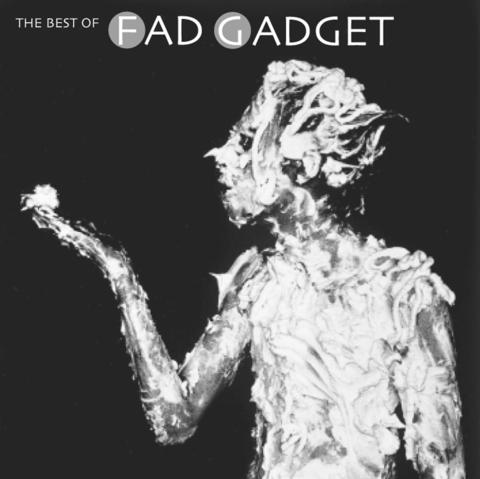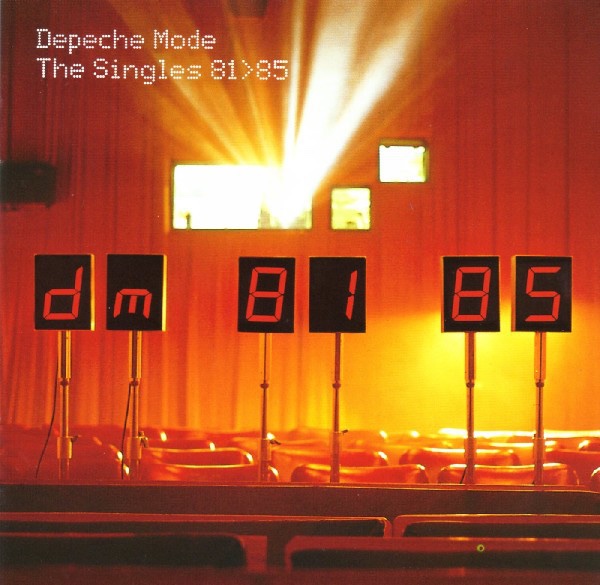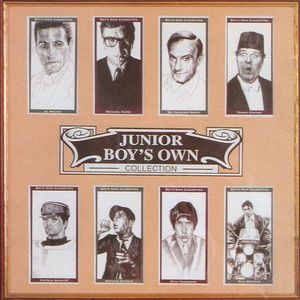
I first became aware of Coil through their remixes of Nine Inch Nails, initially on the singles from The Downward Spiral, and then going backwards through their work on Fixed; or, more precisely, that’s when I first heard them.
It felt like I’d always known about them, just like I’d always known about the interconnected web that incorporated them, Psychic TV and Throbbing Gristle, that awareness somehow being imprinted on me through hours of reading The Wire, NME and any music magazine I could get my hands on in the 90s; like a lot of the stuff I read about, and which appealed to my sensibilities, at that time, I rarely actually got to hear any of it. Instead, I was forced to imagine it in my head based on the vivid descriptions of Coil’s music alone.
And, quite honestly, it scared me as much as it intrigued me; tempting, on all sorts of levels, but also terrifying. Somewhere along the way I read that they’d recorded a soundtrack to Hellraiser, and that was it. I’d grown up with my mother working in a video store. When I used to meet her after work, I’d stare at the images on the VHS boxes of films like Hellraiser and be gripped by an inconsolable fear, well before I’d even watched any of these films, and yet I couldn’t look away. And I guess that’s how I approached Coil – deeply, strangely intrigued, but also absolutely petrified.
Time passed. I got over my timid wimpiness about horror films and the darker sides of life and found myself absorbing myself in bands like NIN in order to develop a thicker, more robust exterior. But still Coil somehow didn’t directly come into that new weltanschauung – tangentially, for sure, through remixes and the odd track on a compilation or other, but the idea of diving into their catalogue was still nerve-racking, what with all the bootlegs, alternative versions and other recordings. Part of me wanted to keep the mythology intact about the core creative and romantic duo of Peter ‘Sleazy’ Christopherson and John Balance, and part of me was just simply daunted by the exercise; it’s like when someone tells you, at around series ten of something that you failed to watch when it first hit the screens (e.g. Game Of Thrones), the idea of going back that far fills me with absolute and unimaginable dread.
Fortunately, in the case of Coil, a solution is at hand – though it wasn’t, for a long time. A Guide For Beginners – The Voice Of Silver and its counterpart A Guide For Finishers – A Hair Of Gold were released by the Russian Feelee label on the occasion of Coil playing their first show in Moscow in 2001, and have now been released as a double CD edition by the Cold Spring imprint. Calling the pair of collections a ‘best of’ seems utterly, utterly inappropriate, but what these two albums highlight are Coil’s panoply of diverse and outwardly incompatible concerns – dark ambient, twisted folk, skewed lysergic techno experiments, punishing industrial bleakness, psychogeographical excursions into oblique storytelling, magick, mushrooms, moon music and occult mystery.
The collections traverse the entire Coil back catalogue from 1984’s Scatology through to 2000’s second volume of Musick To Play In The Dark, but in a typically non-linear way. Here you’ll find deserved staples like the brooding Italianate operatic gestures of ‘Ostia (The Death Of Pasolini)’ and the nauseating sampleadelica of ‘The Anal Staircase’ from Horse Rotorvator (1986), or the svelte electro of ‘Further Back And Faster’ from Love’s Secret Domain (1991). You’ll also find more surprising inclusions, like the urgent, trance-like ‘A.Y.O.R’ from 1993’s Backwards bootleg and the low-slung paranoid dub-dread of ‘Scope’ from 1990’s ‘Wrong Eyes’ 7-inch. The discordant serenity of ‘A Cold Cell’, on A Guide For Beginners, was effectively a solitary exclusive here, a different version appearing on The Wire’s sixth volume of their enduring Wire Tapper series.
Across two hours, and when taken as a whole, these two albums make for a disturbing and trippy listen. Coil’s brand of ambient music has a rough edge, its outer fringes laced with dangerous temptations and a languid, savage latency which leaves you feeling ever so slightly unsettled. When in the mood, Christopherson and Balance could also produce sublime and beautiful music. The edit of ‘Batwings (A Limnal Hymn)’ from Musick To Play In The Dark Vol. 2 is nothing short of devastating, its delicate, ephemeral, libidinal poignancy all the more striking when you know it was played at Balance’s funeral two short years later.
It is inevitably the darker moments, however, that prevail. ‘The First Five Minutes After Death’ (mistitled as ‘The First Five Minutes After Violent Death’, the name of a completely different version) from 1987’s Gold Is The Metal (With The Broadest Shoulders) has all the harrowing and unswerving brutality of one of Warhol’s Death and Disaster screenprints of car accidents. Long after the albums finished, I was still haunted by the chilling melody of ‘The Lost Rivers Of London’, originally recorded for the Succour -Terrascope Benefit Album in 1996. The song is a tumultuous ride through the hidden tunnels and passages of the pulsating, demoniacal London beneath London, finally arriving at a scene of dispassionate, detached horror not unlike Velvet Underground’s ‘Lady Godiva’s Operation’; its melody is as chillingly insistent as Elliott Smith’s plaintive ‘Figure 8’ and a soft, conspiratorial delivery from Balance is like listening to someone gently narrating your worst nightmares. (Note to my younger self: you were right to be scared of Coil’s music(k).)
Cold Spring’s reissue preserves the vague impenetrability of the Feelee original albums. Like the Russian CDs, the new edition lacks any information, being intended for the Coil-curious novice but also directly appealing to the aficionado, the follower that can discern Stephen Thrower’s and Danny Hyde’s contributions to Coil from Drew McDowall’s and Thighpaulsandra’s. At first my instinct was to find this frustrating, a ‘deluxe’ package lacking the expected qualities of a ‘deluxe’ package – no credits, no liner notes – feeling like little more than a bootleg in an official release’s clothing.
As I turned the fold-out cardboard case in my hands, I slowly came to see this artefact as the precise embodiment of Coil: an elusive, unknowable proposition, where answers are fewer than questions, an evolution that took their music from post-Throbbing Gristle industrial reference points to a sort of electro-psychedelia, and whose inner impulses, motivations and secrets Balance and Christopherson took to their untimely graves.
A Guide For Beginners – The Voice Of Silver / A Guide For Finishers – A Hair Of Gold by Coil was released October 23 2020 by Cold Spring.
Words: Mat Smith. With thanks to Gary at Red Sand and Bryan.
(c) 2020 Documentary Evidence










